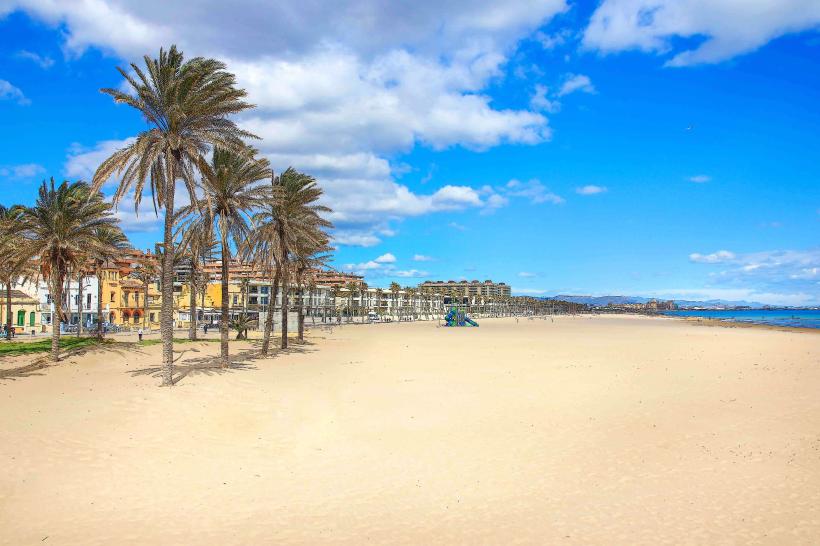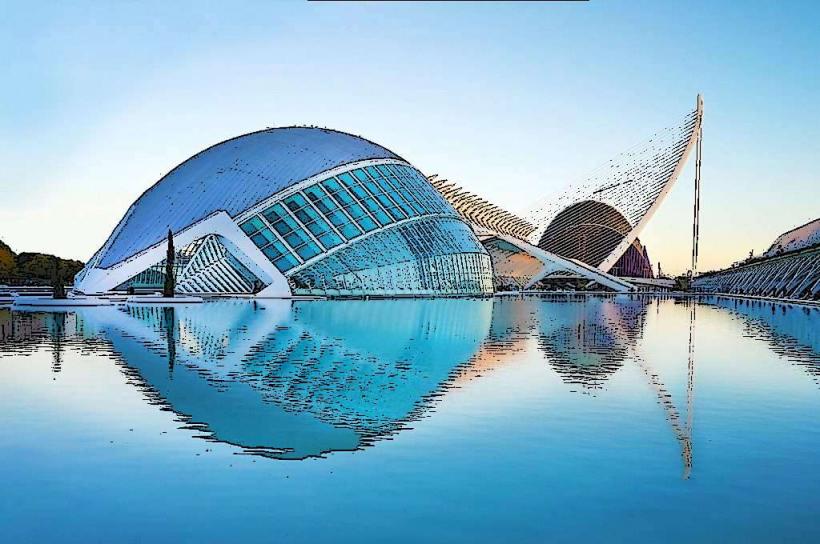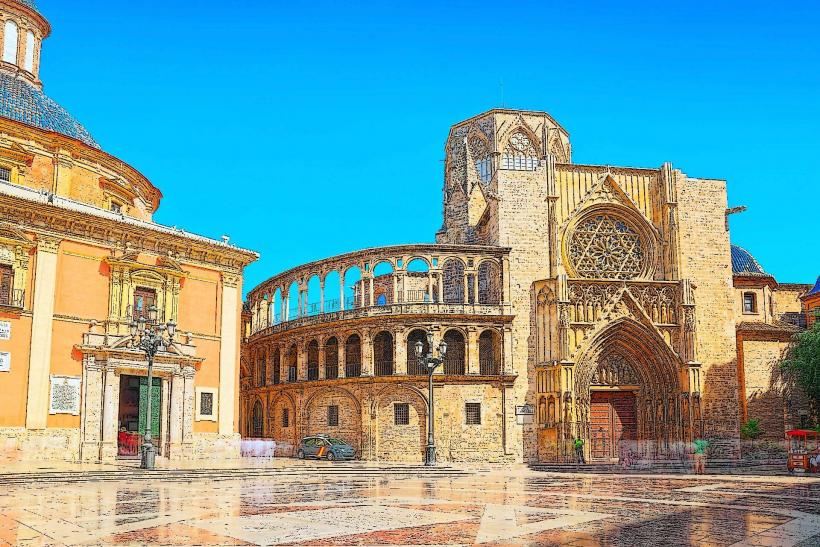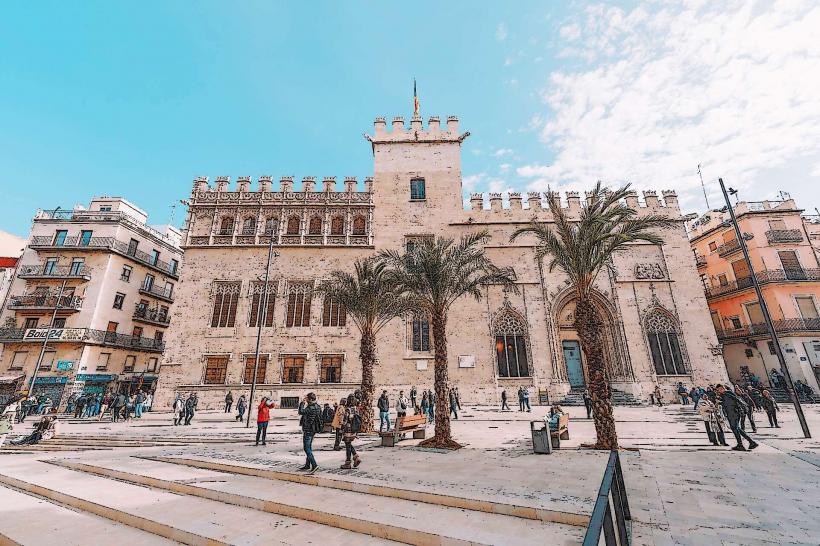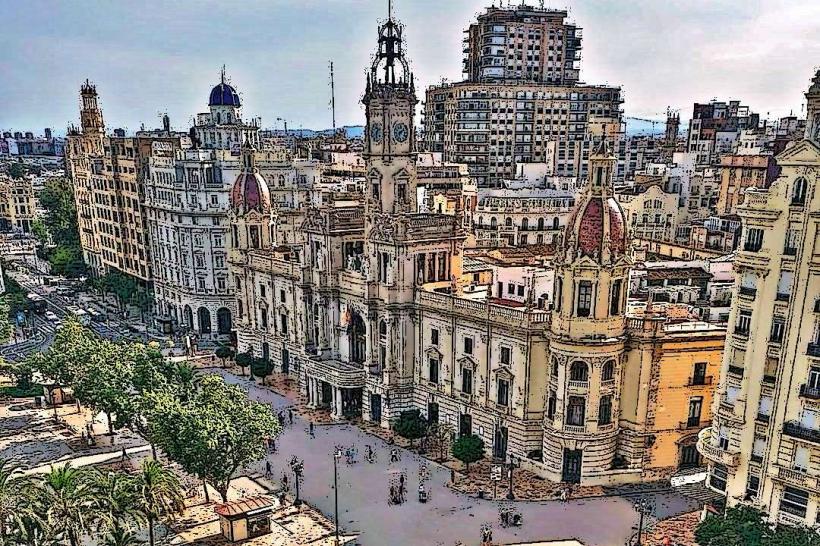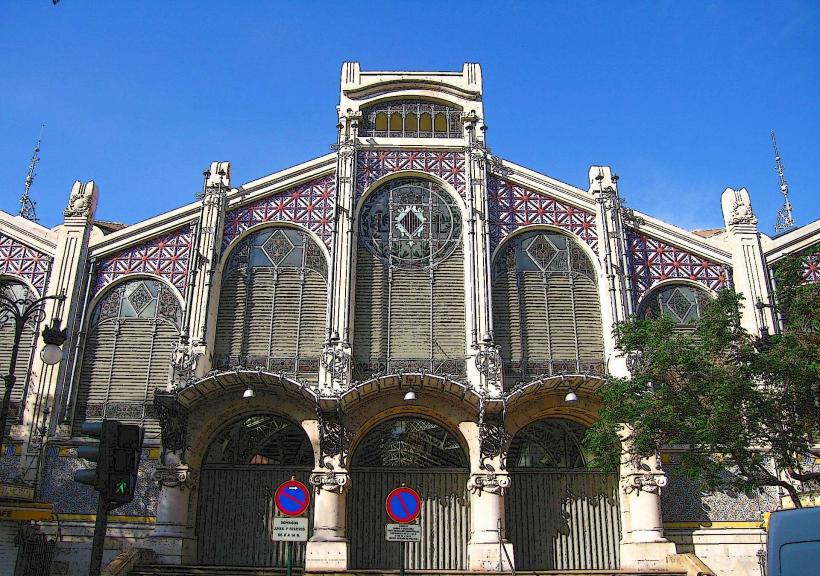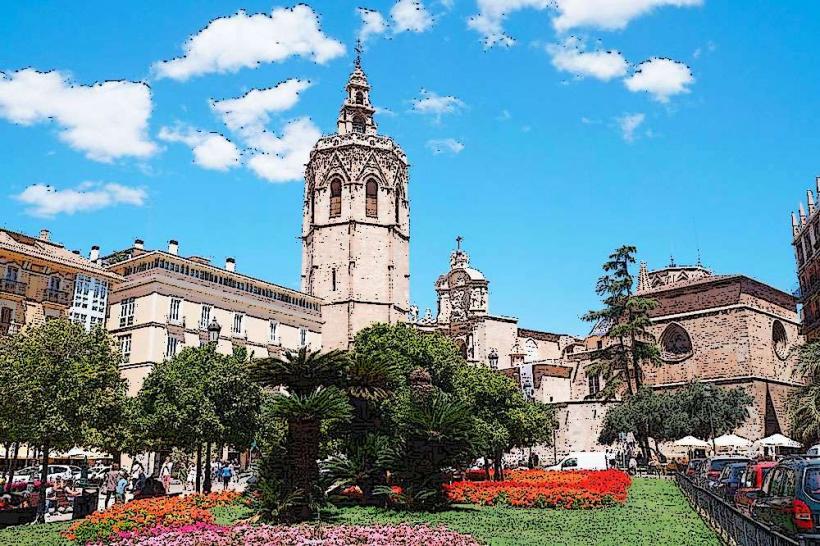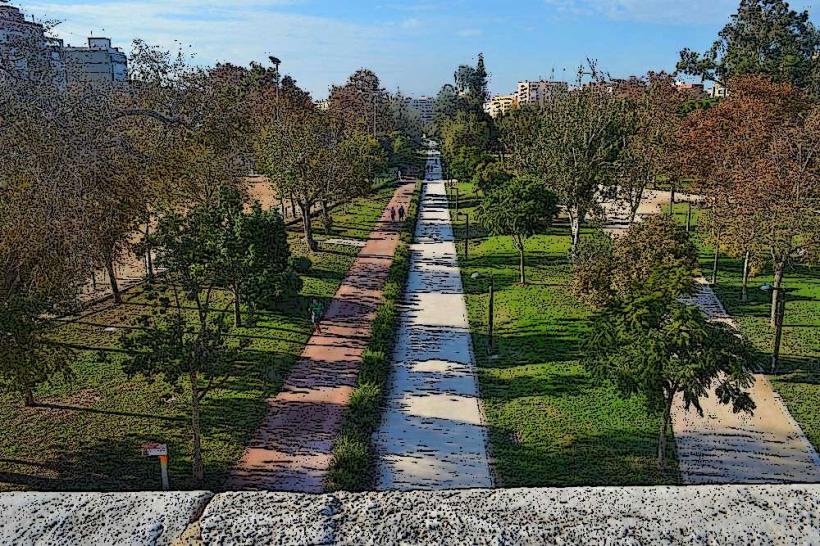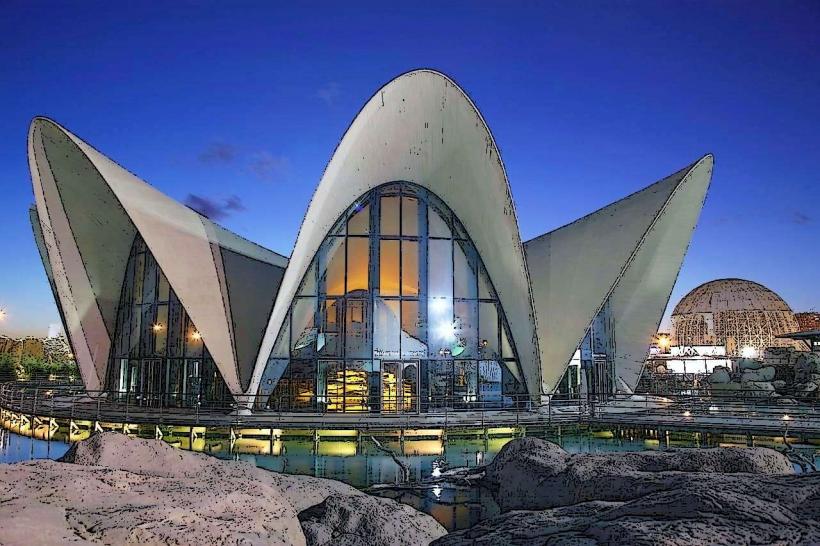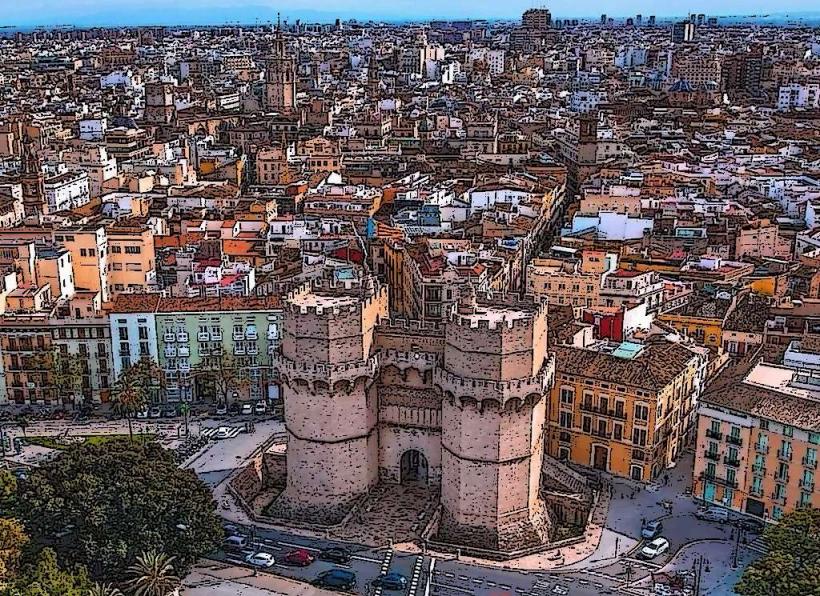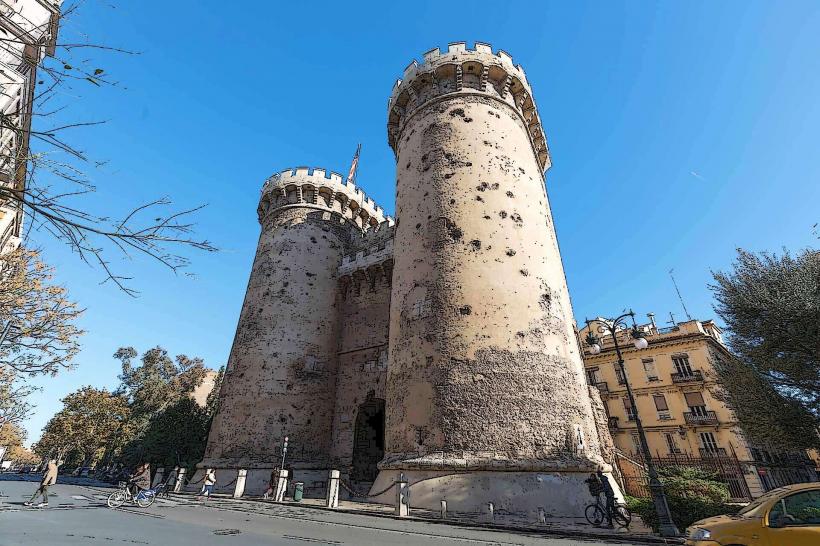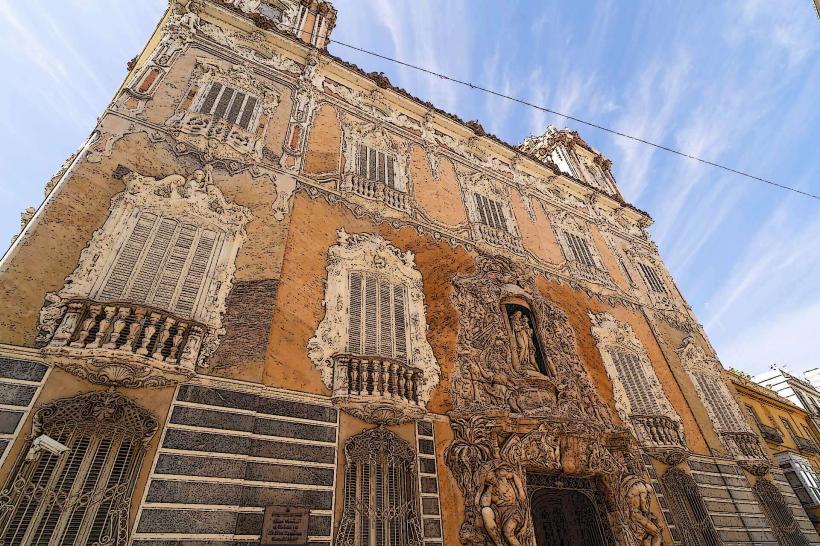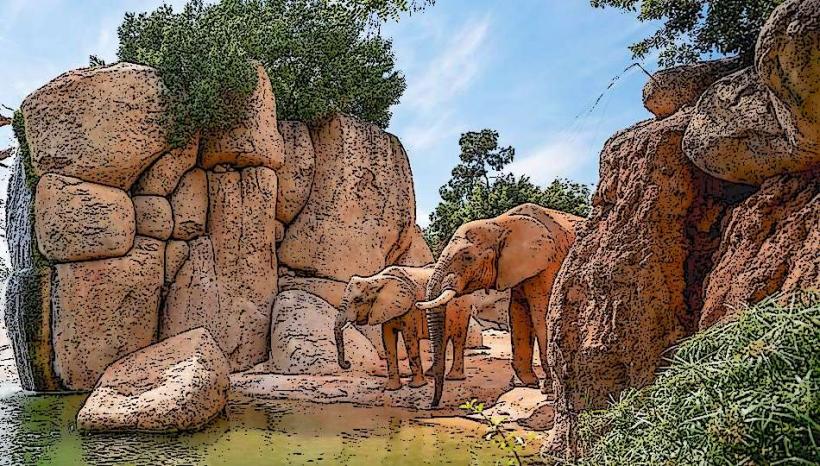Information
Landmark: Mercado de ColonCity: Valencia
Country: Spain
Continent: Europe
The Mercado de Colón (Colón Market) is one of Valencia's most beautiful and historic markets, located in the heart of the city. It is renowned for its modernist architecture and vibrant atmosphere, blending both cultural heritage and contemporary dining experiences.
Key Details about Mercado de Colón:
1. Historical Background
- Construction: The Mercado de Colón was designed by the architect Francisco Mora and was built between 1914 and 1916. It was originally conceived as a marketplace for selling fresh produce, meats, and other goods to the people of Valencia.
- Opening: The market opened in 1916 and quickly became a key site for daily commerce in the city, playing a significant role in the local economy for several decades.
- Name: It was named after Christopher Columbus (Cristóbal Colón) to honor his voyages to the New World. The building itself reflects the grandeur and optimism of early 20th-century Spain.
2. Architectural Features
- Modernist Style: The Mercado de Colón is a stunning example of modernist (or Art Nouveau) architecture. The building features elegant iron structures, brickwork, and decorative details that highlight the craftsmanship of the era.
- Facade: The market’s facade is grand and imposing, with arched entrances, exquisite ironwork, and decorative ceramic tiles featuring local motifs.
- Roof: One of the most striking features of the market is its glass and iron roof, which allows natural light to pour into the central space, giving the market an open and airy feel. The roof also features an intricate iron latticework.
- Interior: Inside, the market is divided into columns and arches that create a dynamic, cathedral-like atmosphere. The central area is spacious, with a clear view of the sky through the roof. The building’s interior walls and floors are decorated with mosaics and tiles, which are typically found in Valencian traditional ceramics.
3. Historical and Cultural Significance
- Market Role: In the early 20th century, Mercado de Colón served as a central location for food trade, catering to the residents of the surrounding neighborhoods. The market housed a variety of vendors, from butchers and fishmongers to fruit sellers.
- Changing Times: By the late 20th century, the market experienced a decline in its original use as a food market. The space was eventually renovated and repurposed to adapt to changing urban needs, while preserving its architectural charm.
- Restoration: In the 2000s, the building was renovated to turn it into a modern space that houses shops, restaurants, cafes, and cultural spaces while preserving its historic features. The restoration aimed to retain its heritage and architectural beauty while adapting to contemporary use.
4. Current Use and Visitor Experience
- Cultural Space: Today, the Mercado de Colón is not only a place to shop but also a cultural venue. It hosts art exhibitions, events, and sometimes live music performances, making it a lively spot for both locals and tourists.
- Shops and Dining: The market is now home to several gourmet food stalls, restaurants, and cafes that serve both traditional Spanish food and contemporary cuisine. Visitors can enjoy a coffee, pastry, or a tapas meal while admiring the beautiful surroundings.
- Gourmet Food: While you won’t find fresh fish or meat stalls as in its original function, the market has been transformed into a culinary space with a focus on high-quality food and local produce.
- Shops: Apart from food, the market has also been adapted to include various shops selling products like local crafts, delicacies, and artisanal goods.
5. Design Highlights
- Glass and Iron: The iconic glass and iron structure that covers the roof is a standout feature, allowing ample light into the space while creating a distinctive aesthetic. The interplay of natural light, iron, and glass gives the market a sense of openness and vibrancy.
- Tiles and Ceramics: The use of ceramic tiles throughout the market, including on the floors and walls, reflects the city’s long history with ceramics, a craft for which Valencia is famous.
- Columns and Arches: The central hall is defined by tall columns and arched walkways, which add to the market's architectural elegance.
6. Location and Accessibility
- Address: Mercado de Colón is located at Carrer de Jorge Juan, 19, in the Eixample district of Valencia, an area known for its modernist buildings and wide boulevards.
- Proximity: It is a short distance from other prominent areas in Valencia, such as Plaza de Cánovas and the Colón metro station, making it easily accessible for both locals and tourists.
- Public Transport: The market is well connected to public transportation, including the Valencia Metro, with the Colón station nearby.
7. Cultural and Social Role
- Social Hub: Mercado de Colón is more than just a market—it serves as a social space where people can gather to eat, drink, shop, and socialize. The market has become a gathering point for food lovers, local residents, and tourists alike.
- Architectural Appreciation: The market is a popular destination for architecture enthusiasts due to its modernist design, which blends elements of Art Nouveau and Art Deco.
Conclusion
The Mercado de Colón is a stunning example of early 20th-century modernist architecture, offering both a glimpse into Valencia's historical past and a vibrant space for contemporary culture and commerce. Whether you're interested in its architectural beauty, enjoying gourmet food, or simply soaking in the atmosphere of one of Valencia's most cherished landmarks, the Mercado de Colón offers something for everyone.

